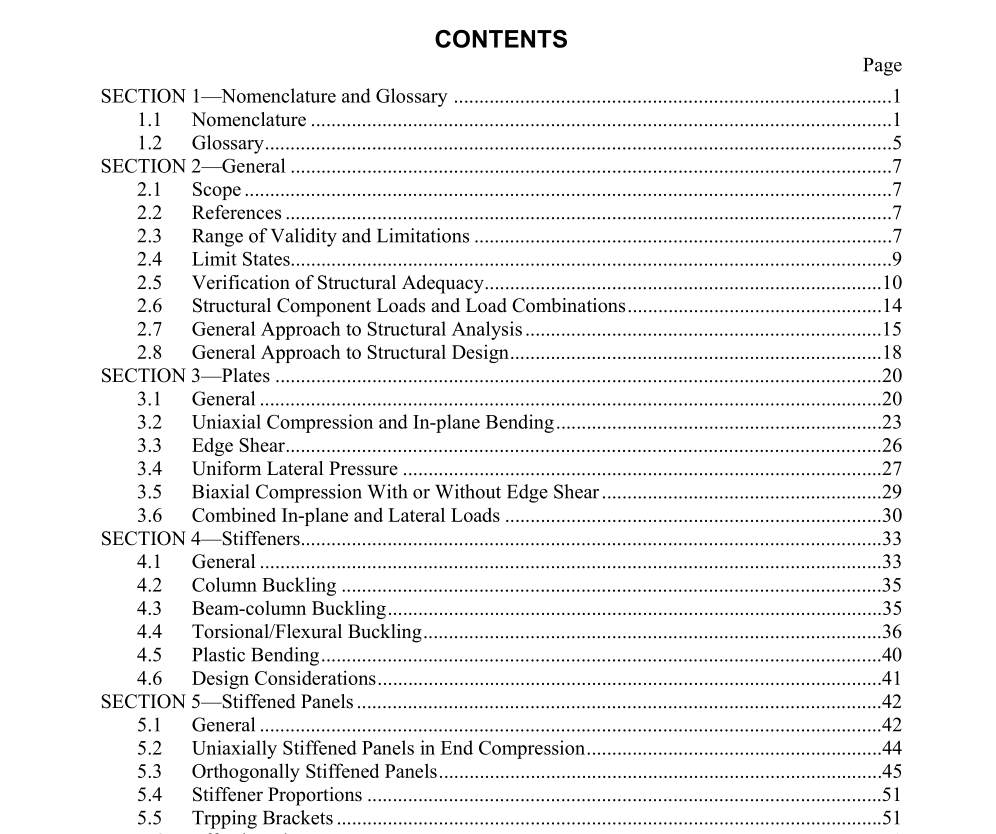API Bull 2V pdf download

API Bull 2V pdf download.Design of Flat Plate Structures
2.1 SCOPE
2.1.1 Bulletin 2V provides guidance for the design of steel flat plate structures. These often constitute main components of offshore structures. When applied to Tension Leg Platforms (TLPs) this Bulletin should be viewed as a complement to API RP 2T. The Bulletin combines good practice considerations with specific design guidelines and information on structural behavior. As such it provides a basis for taking a “design by analysis” approach to structural design of offshore structures. 2.1.2 Flat plate structures include thin plates, stiffened panels and deep plate girders, and they can constitute the main component of decks, bulkheads, web frames and flats. The external shell of pontoons or columns can also be made of flat stiffened panels if their cross section is, for example, square or rectangular, rather than circular. 2.1.3 Bulletin 2V is not a comprehensive document, and users have to recognize the need to exercise engineering judgment in actual applications, particularly in the areas that are not specifically covered. 2.1.4 Plates are discussed in Section 3, stiffeners in Section 4, stiffened panels in Section 5, and deep plate girders in Section 6. Limit states are given for each relevant load and load combination, and design requirements are also defined. Figure 2.1-1 summarizes the structural components and the limit states covered in Bulletin 2V. 2.2 REFERENCES Background and references on the contents of Bulletin 2V are included in a Commentary given in the Appendix. Reference is made to API RP 2T, Recommended Practice for Design of Tension Leg Platforms, and API RP 2A, Recommended Practice for Planning, Designing, and Constructing Fixed Offshore Platforms, American Petroleum Institute, and to the American Institute of Steel Construction, Specification for the Design, Fabrication and Erection of Structural Steel for Buildings, latest edition.
2.3 RANGE OF VALIDITY AND LIMITATIONS
2.3.1 The formulations given apply only to members made of structural steel used for offshore structures, as defined in API RP 2T. 2.3.2 Structural components must comply with the dimensional tolerance limits defined in API RP 2T. Members not complying with these requirements should be given special consideration, given the potential negative impact dimensional imperfections can have on structural performance. 2.3.3 The formulations for the limit states given may be replaced by more refined analyses, or model tests, taking into account the real boundary conditions, the actual load distribution, geometrical imperfections, material properties, and residual stresses.
2.4 LIMIT STATES
2.4.1 Working Stress Design 2.4.1.1 The design basis adopted in this Bulletin is the working stress design method, whereby stresses in all components of the structure cannot exceed specified allowable values. Allowable stresses are associated with two basic structural requirements: resistance to failure (ultimate limit states); and stiffness and strength criteria (serviceability limit states). 2.4.1.2 In addition to specifying allowable stress values, certain limits on non-dimensional parameters can be defined. Examples are upper limits on web depth to thickness ratio, or flange width to thickness ratio for I-section stiffening elements, which are in general defined to limit the possibility of buckling of the web or flange. These limits on cross sectional proportions are normally associated with good design practice. 2.4.2 Ultimate Limit States 2.4.2.1 Ultimate limit states correspond to the maximum load carrying capacity of a member at failure. Thus, if an ultimate limit state is reached, the structure collapses and loses its load carrying capacity. Failure may be due to: 1. Material plastic flow, 2. Material fracture, 3. Collapse due to local or general instability. 2.4.2.2 The ultimate limit states considered here include only failure due to material plasticity, and collapse due to local or general instability.









